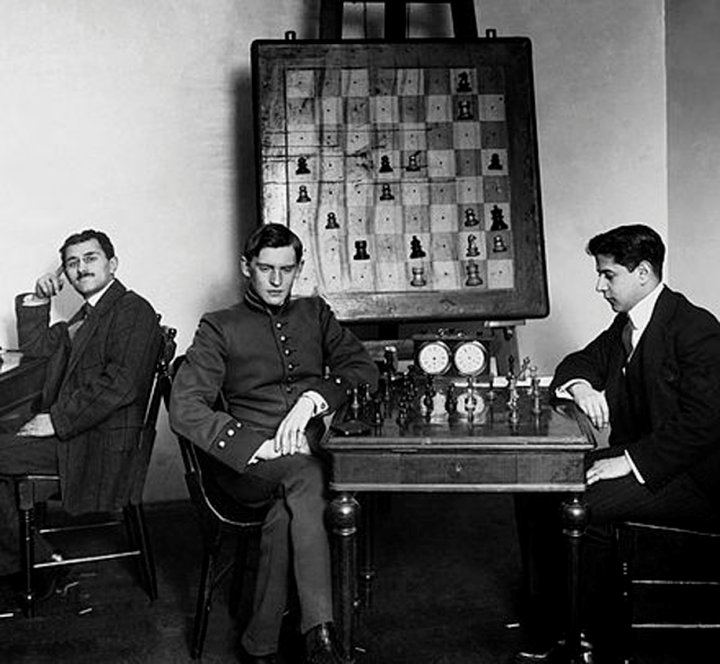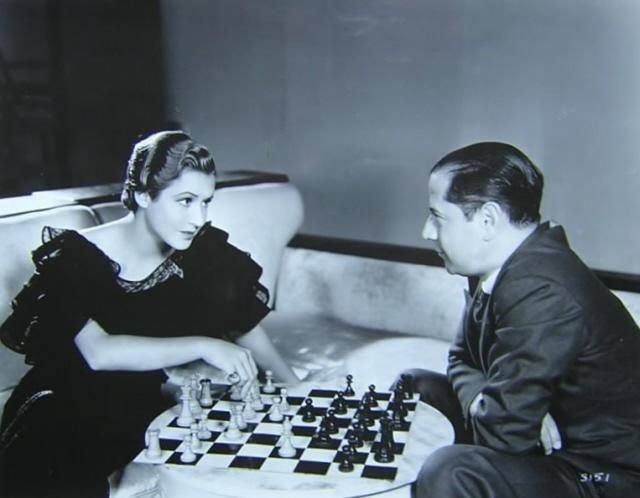


130 years ago, November 19, 1888, José Raúl Capablanca was born in Havana, Cuba, as the second son of a Spanish army officer. Capablanca is said to have learned chess when he was just four years old, allegedly by watching his father play with friends. At the age of twelve Capablanca won a match Juan Corzo, the Cuban Champion at that time.
After finishing school Capablanca went to New York to study at Columbia University with a grant. He enrolled in sports and chemical science but after the first semester, his grant was withdrawn because he studied chess much more ardently than chemistry or sports.
Capablanca was a regular guest at the Manhattan Chess Club where he met World Champion Emanuel Lasker in 1906 — the first time they met. The current and the future World Champion both took part in a rapid tournament and the 18-year old Cuban beat Lasker in the final.
Three years later, 1909, the Manhattan Chess Club was also the venue of a match between Capablanca and Frank Marshall which Capablanca won 8-1, and 14 draws.
But the most famous game between Capablanca and Marshall was played nine years later:
When Jacques Mieses in 1911 organised a tournament in the Spanish town San Sebastian he invited the world's best players of that time but also Capablanca who was unknown in European chess circles. Lasker did not play but Capablanca surprised the European masters and won the tournament. The tournament in San Sebastian was a kind of unoffical candidates tournament and after winning it on October 26th, 1911, Capablanca sent World Champion Emanuel Lasker a challenge for the title. However, the two players could not agree on the conditions and another ten years would pass before the match finally came about.
In 1913 Capablanca was given a diplomatic post by his home country Cuba and with this post came the liberty to take time off to play in all the tournaments he wanted to play in. At the great tournament in St. Petersburg 1914 Capablanca again talked with Lasker about a possible World Champion match. Now the two came close to an agreement and after the tournament they even played a blitz match in Berlin which Capablanca won 6½-3½. But this time the outbreak of World War I which put an end to all chess activities in Europe and also made a World Championship match between Capablanca and Lasker impossible.
After the war, Capablanca again entered negotiations with Lasker to play a World Championship match, and in 1921 they finally played for the title in Cuba. The total prize fund was USD $20,000 of which Lasker was guaranteed to receive $11,000, no matter how the match would end. But in 1921 Lasker was already more than 50 years old and way past his prime. After four losses and ten draws Lasker gave up the match and Capablanca became new World Champion.
In 1925, during the International Tournament in Moscow, Capablanca had a guest appearance in the Russian movie "Chess Fever".
After World War I until the middle of the 1920s Capablanca was the world's clear number one. But soon Alekhine grew into a serious rival. Back in 1921, Alekhine had already challenged Capablanca to play a match for the title but Capablanca was uncompromising and demanded a purse of at least USD $10,000 (about $260,000 in today's money) which angered Alekhine. But, in 1927, Alekhine managed to procure the money played Capablanca in Buenos Aires. In this match Capablanca was the clear favourite, not least because he had never before lost a single game to Alekhine, but Capablanca lost the match 3-6 (25 games were drawn).
For the remainder of his life Capablanca tried to play a rematch for the title against Alekhine but Alekhine insisted on the same high financial demands that Capablanca had insisted upon and tried to avoid a rematch. Towards other challengers, however, Alekhine was much more forthcoming. Capablanca and Alekhine once had been on very good terms and in St. Petersburg 1914 they often analysed together but after their match in 1927 their friendship turned into enmity. If possible, they avoided to play in the same tournaments, and if they had to they still tried never to be in the same room at the same time.

Alekhine and und Capablanca, 1914
Capablanca's chess was marked by great ease. Where others had to work hard for a win Capablanca seemed to win without effort. The Cuban only rarely lost a game. From 1916 to 1924 he played 63 games in a row without a loss and won 40 of these games. Capablanca played 578 official tournament games in his career and lost only 36 of them.
Off the board, Capablanca also had a winning personality. His charm won the heart of many a woman and he liked female company.

Capablanca with the actress Mae Clarke
In 1937 he divorced his first wife Gloria Simioni y Betancourt and married Olga Chagodaef, whom he had met in 1934 on a party.
In 1938 Capablanca suffered a minor stroke during the AVRO tournament but still finished the event. On March 7, 1942, he suffered a second stroke while kibitzing at the Manhattan Chess Club. He died in the morning of the next day, on March 8, 1942, at Mount Sinai Hospital.
Translation from German: Johannes Fischer